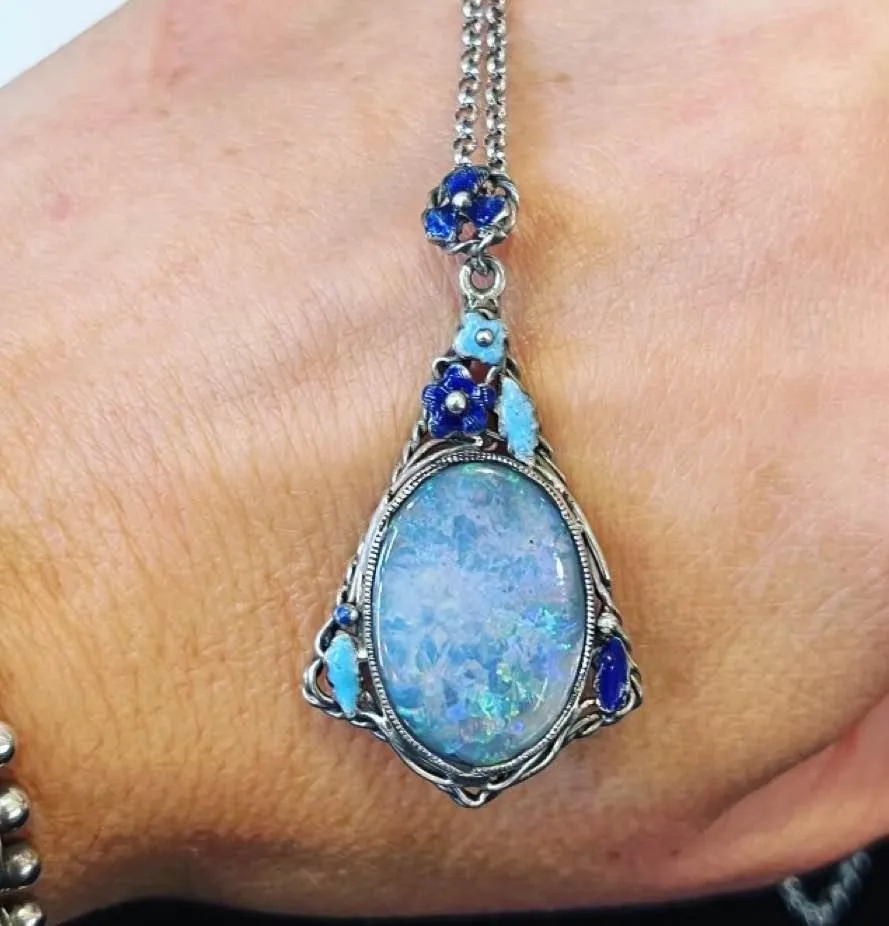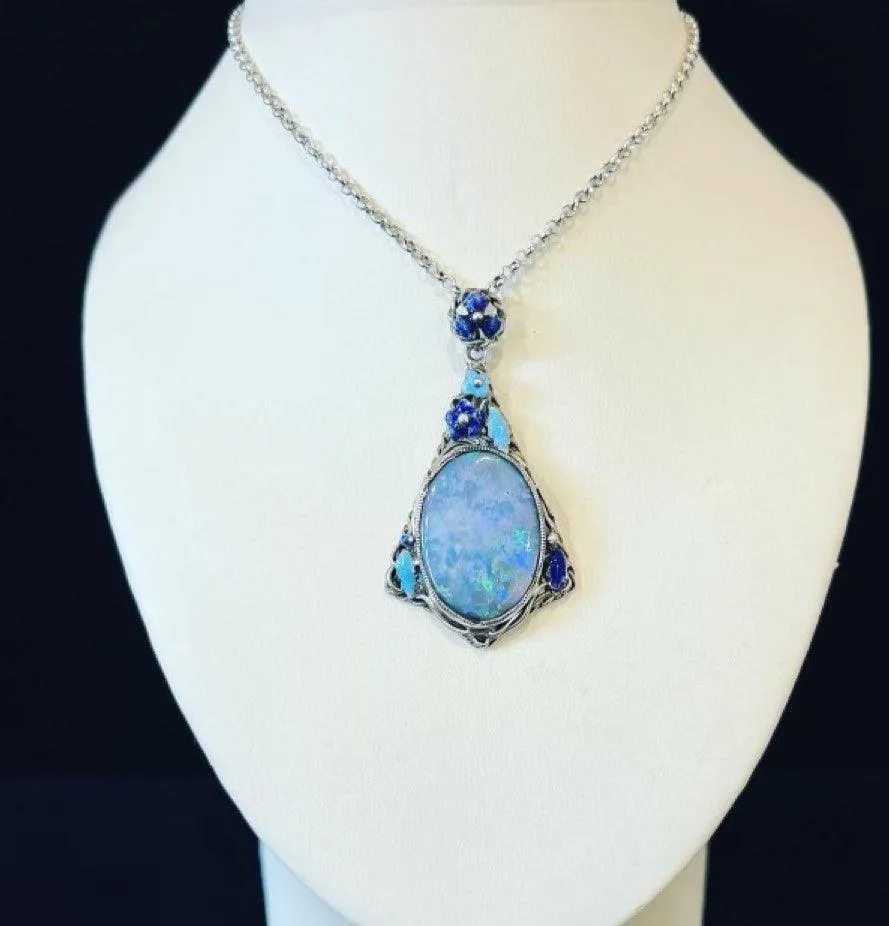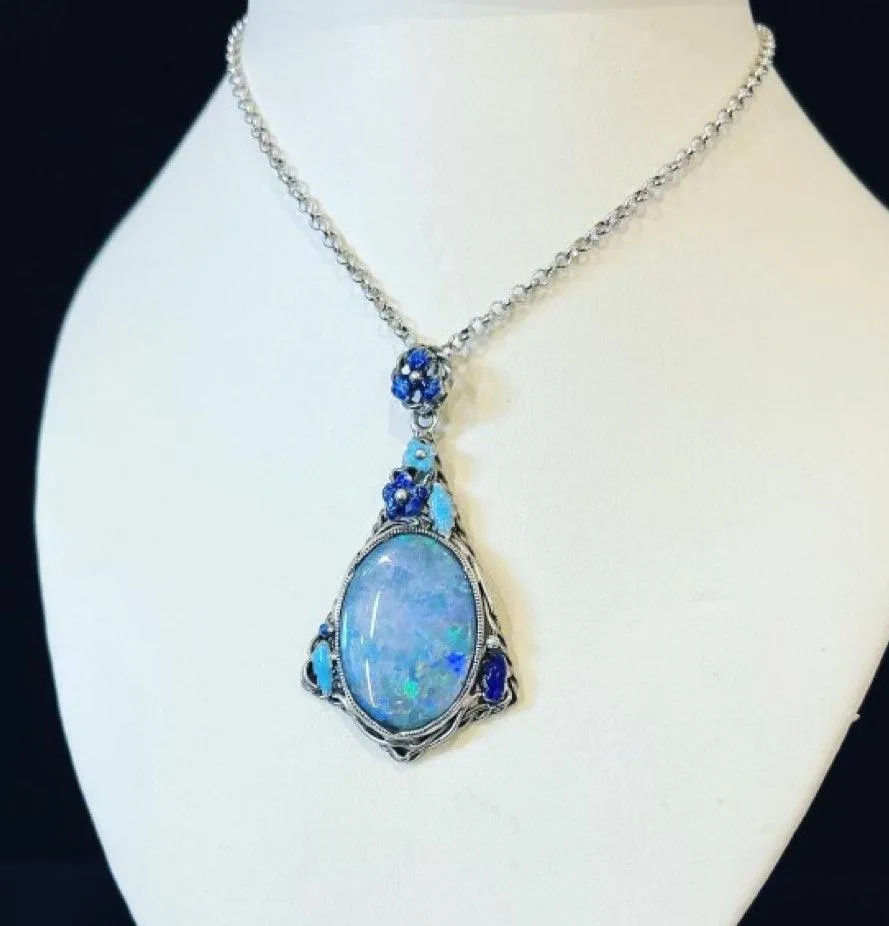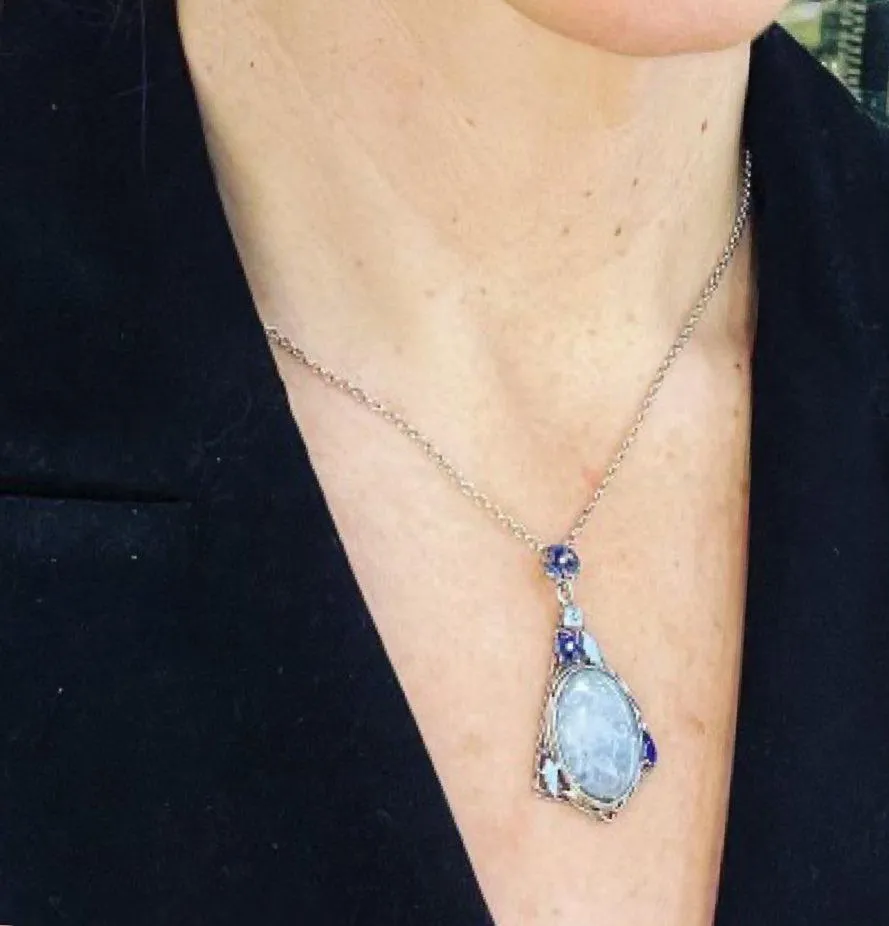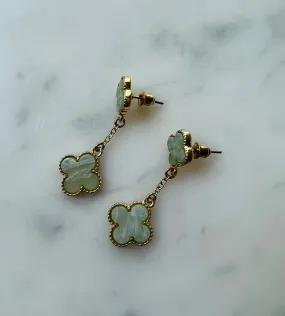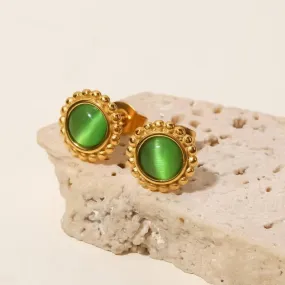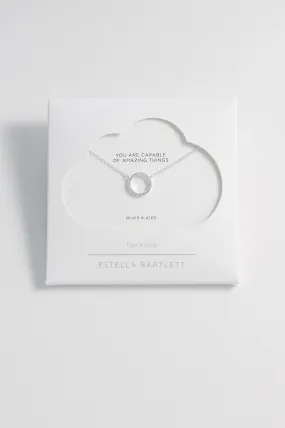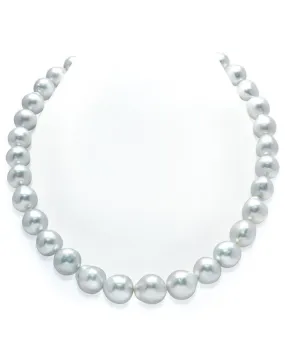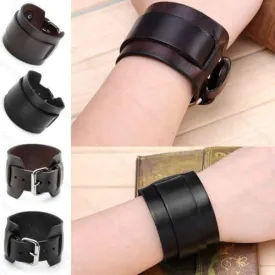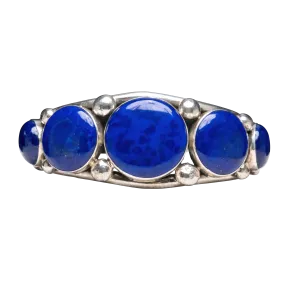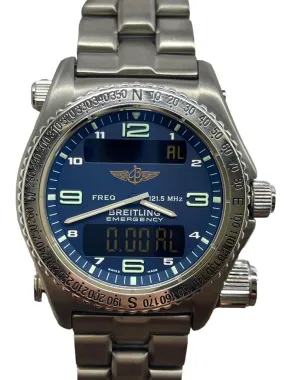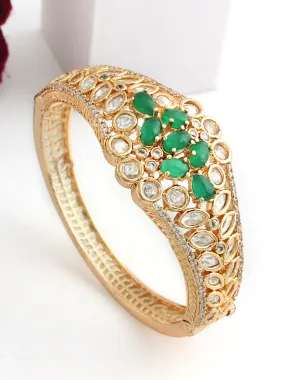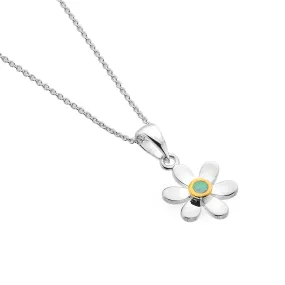This gorgeous 1920s pendant just came into the boutique. In the style of Rhoda Wager, we have a 6.00ct oval Lightning Ridge opal set ornately in sterling silver, with the most precious flowers and leaves (possibly forget-me-nots) in dark & light blue enamel.
Circa: 1920
Gemstone: Solid Lightning Ridge Opal
Carat: 6.00ct
Cut: Oval
Gemstone: Solid Lightning Ridge Opal
Carat: 6.00ct
Cut: Oval
Origin: Australian
Material: Sterling Silver
Victorian Period (1837 - 1901):
The Victorian Period defined by none other than Queen Victoria herself, had three stages - the Romantic, the Grand and the Aesthetic. It was during the Romantic era that Queen Victoria married her Prince, Albert. Sentimental motifs such as; hearts, lover’s knots, flowers, bows, crescent moons and particularly serpents (which was subject to Queen Victoria’s engagement ring which represented enduring love) became extremely popular in jewellery design. Cameos, Enamelling and the use of bright coloured gemstones such as; garnets, amethysts, turquoise, pearls and diamonds gave way to the creation of jewellery that was beginning to speak a symbolic language of its own. The Grand era was a sombre period which saw Queen Victoria mourning the death of her beloved husband Albert. It encompassed 20 years during which time Victoria would only wear black and mourning jewellery. As a result the Whitby Jet industry flourished and onyx and deeper coloured garnets rose in popularity. Rings, lockets and brooches were commissioned with compartments for a lock of a loved one’s hair and were often engraved with the person’s name, age and date of death. The Aesthetic era saw a return to the light-heartedness of the Romantic Era. The discoveries being made through archaeology led to an Etruscan Revival with Greek, Roman and Renaissance influences becoming apparent in jewellery design as well as symbols of good luck and fortune.
The Victorian Period defined by none other than Queen Victoria herself, had three stages - the Romantic, the Grand and the Aesthetic. It was during the Romantic era that Queen Victoria married her Prince, Albert. Sentimental motifs such as; hearts, lover’s knots, flowers, bows, crescent moons and particularly serpents (which was subject to Queen Victoria’s engagement ring which represented enduring love) became extremely popular in jewellery design. Cameos, Enamelling and the use of bright coloured gemstones such as; garnets, amethysts, turquoise, pearls and diamonds gave way to the creation of jewellery that was beginning to speak a symbolic language of its own. The Grand era was a sombre period which saw Queen Victoria mourning the death of her beloved husband Albert. It encompassed 20 years during which time Victoria would only wear black and mourning jewellery. As a result the Whitby Jet industry flourished and onyx and deeper coloured garnets rose in popularity. Rings, lockets and brooches were commissioned with compartments for a lock of a loved one’s hair and were often engraved with the person’s name, age and date of death. The Aesthetic era saw a return to the light-heartedness of the Romantic Era. The discoveries being made through archaeology led to an Etruscan Revival with Greek, Roman and Renaissance influences becoming apparent in jewellery design as well as symbols of good luck and fortune.




